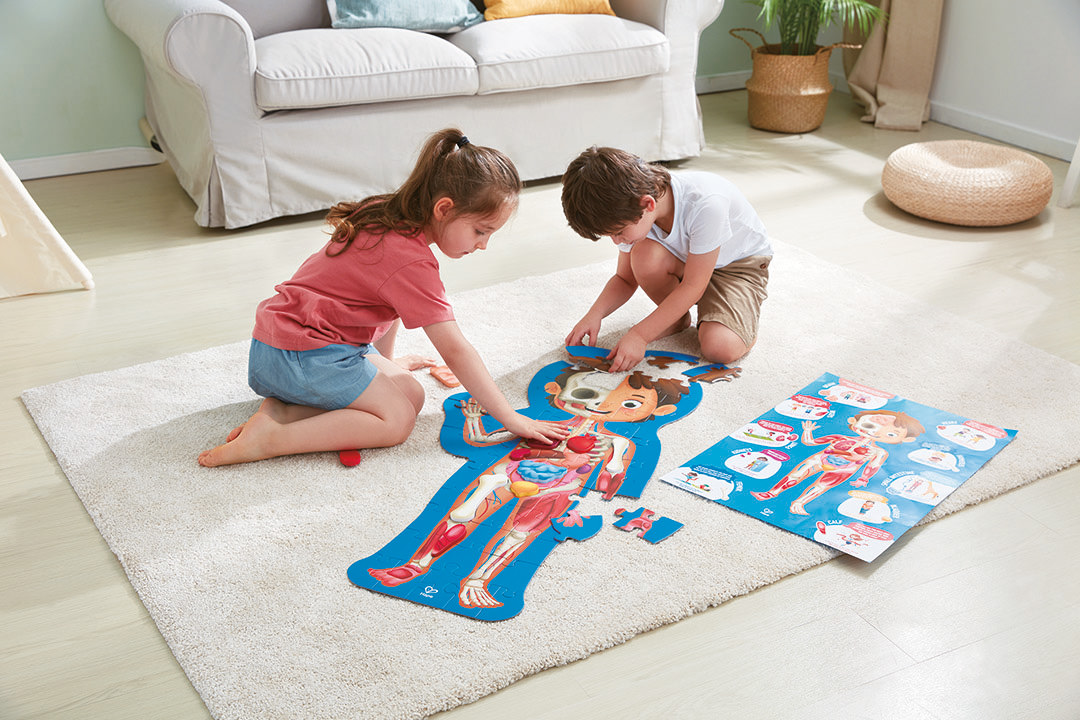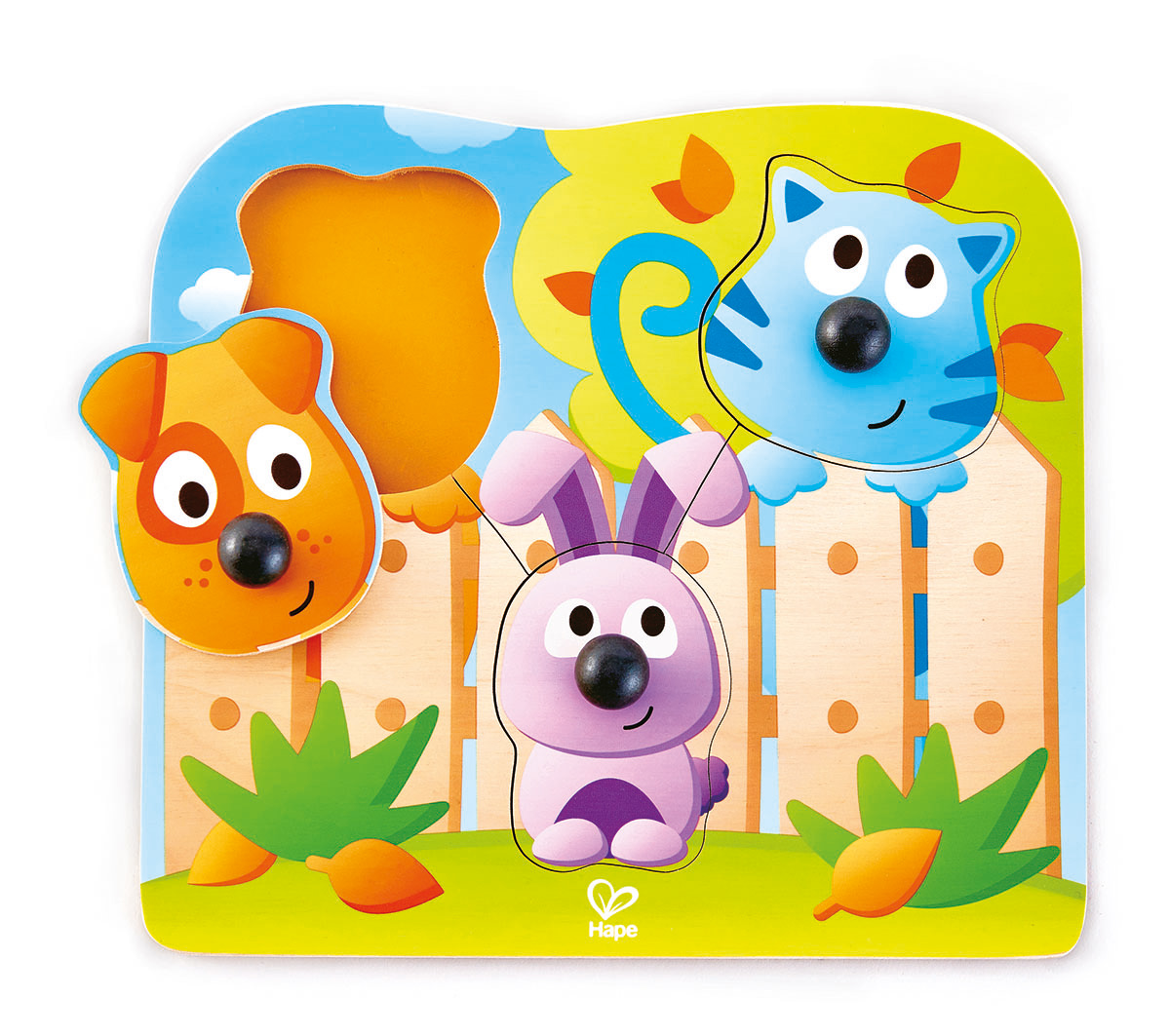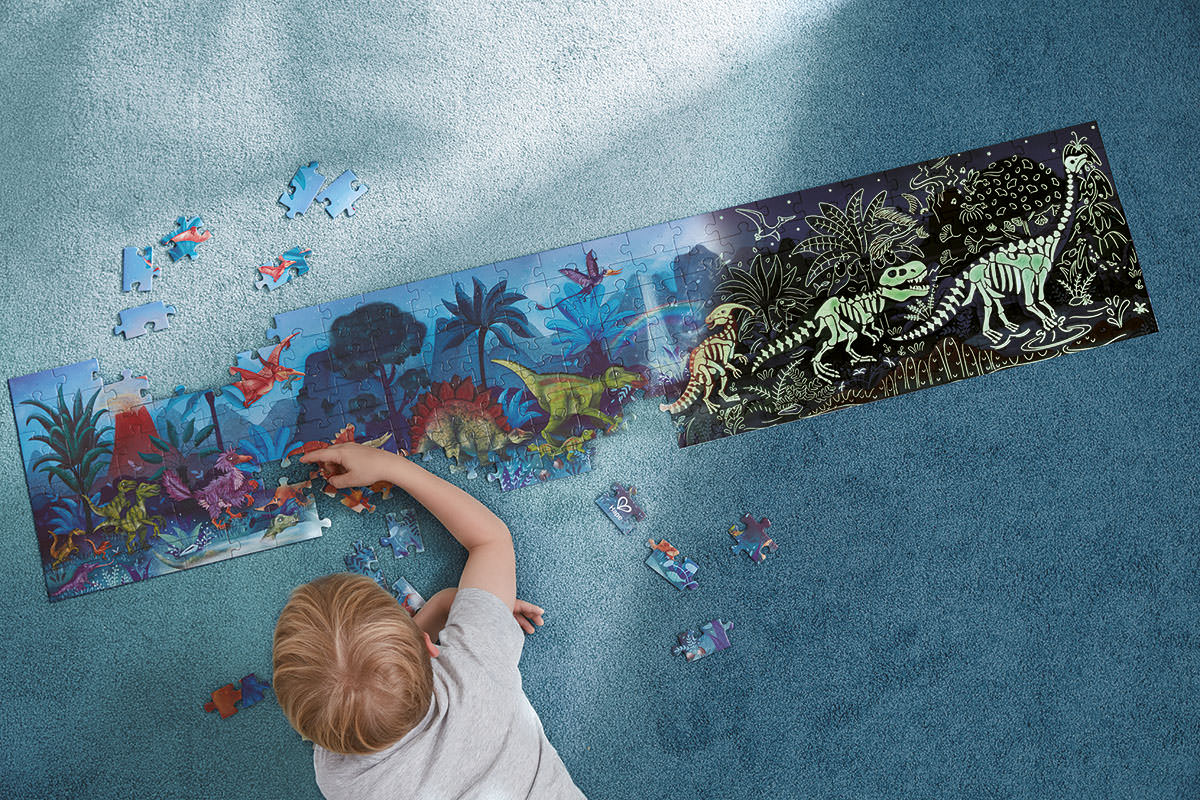06 February 2024
3 min.
When it comes to picking a puzzle for your child, it can be overwhelming. “Choose this to promote fine motor skills and dexterity” or “a 3-year-old should play with a 24-piece puzzle”, luckily here at Hape we’ve compiled the list for you to reference when it comes to picking out a puzzle we know your child will love.
But briefly, why are puzzles so important? Puzzles are more than just a toy, they're key in developing fine motor skills, cognitive abilities, and problem-solving techniques. Plus, they're a fantastic way to bond and create lasting memories. Also keep in mind that this guide serves as a flexible framework rather than a rigid set of rules - each child's developmental journey is unique!

Babies may start playing with easy puzzles at six months or when they can sit up. Inset-type puzzles with a minimal number of pieces are ideal for young children. Baby puzzles should be big, chunky, and have no more than three pieces.
We recommend our Big Nose Puzzles, both Pet and Jungle allow babies to explore adorable pets and lively animals as they grab and grasp by their oversized noses.

As your child grows into a toddler, it’s still important to keep it basic but bright and colourful. Introduce them to various environments and animals or even trucks, boats, and planes. Using recognisable elements like letters and numbers is also beneficial to their development.
Our simple puzzles with large pieces and vibrant colours include Creative Peg Puzzle which challenges your child to stack, sort, and solve whereas the Animal Noise Puzzle reveals the sounds of the farm, providing an exciting sensory experience. Other classics are the Block Puzzle sets where your child can stack and explore various Farm or Jungle animals.
For when they’re show more interest (and can stay concentrated) we suggest these slightly more challenging puzzles: the Chunky Number Puzzle is a colourful number puzzle that blends numerical learning with fine motor skill development. Our Farmyard and Emergency Vehicle peg puzzles are great for developing grip and hand-eye coordination, with easy-to-grasp pegs.

As children reach the preschool age, around 3 to 4 years old, their puzzle-solving abilities blossom impressively. At three, they’re often ready to tackle 24-piece jigsaw puzzles, while four-year-olds can enjoy puzzles with up to 48 pieces, often drawn to pieces with unique shapes and vibrant, well-defined images.
For those ready for a slightly more advanced challenge, puzzles like the Human Body Puzzle and Underground World Puzzle, which require more sophisticated problem-solving skills. These puzzles are perfect for enhancing logical thinking, spatial awareness, and strategic planning abilities in young minds.
As children progress into primary school, typically aged five to eight, their puzzle-solving skills reach new heights. They become adept at completing jigsaw puzzles ranging from 80 to 120 pieces and can even take on the challenge of 180-piece puzzles with smaller parts.
For these young explorers, our Dinosaur or Magic Forest puzzles are intricately designed with more pieces and detailed imagery. These puzzles are instrumental in further developing their ability to recognize patterns, understand relationships whilst enhancing children’s memory, patience and attention to detail.
